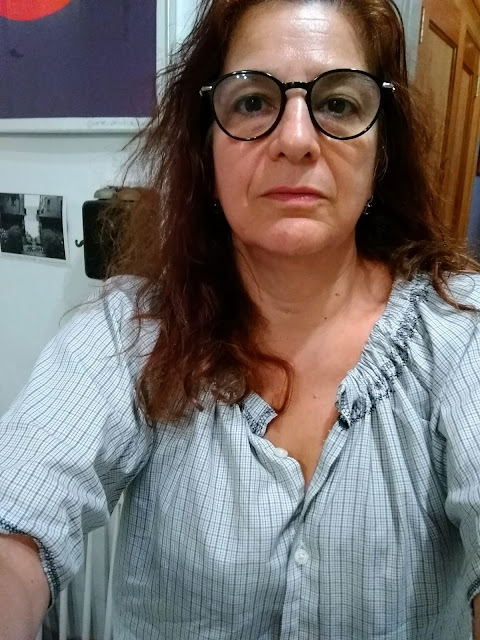Perhaps because I read so many cookbooks and sewing books from the early 20th century which are text only I had assumed that my text-only description of how to transform a man's shirt into a woman's peasant style blouse would suffice.
I realize now that we live in a different world than our grandparents. Photos or illustrations really do make explaining some tasks a bit easier.
My son had inherited this shirt from our neighbor. He has been wearing it for a few years. It has a bit of a bleach stain on the back yoke near the collar. Since my son has so many really beautiful dress shirts, I told him that I was claiming this shirt for transformation.
I marked where the shirt needed to be cut, for you my dear readers.
Left to my own devices I would have just cut with no guidelines.
Both the front and the back of the shirt need to be cut. You can see the bleach spot near the collar.
Both the front and the back of the shirt need to be cut. You can see the bleach spot near the collar.
There are some pleats in the shirt back so when you cut the collar and the yoke off the shirt looks impossibly wide. Do not despair. Instead, finish off the raw edge of the cut shirt. I used my serger. Use your favorite fabric hemming trick.
Next, you need elastic. I have used 1/4 inch elastic. In the past but I have noticed lots of off the shoulder shirts using 1/2inch and wider elastic at the neckline. I had a length of 1/2 inch elastic handy so I used that.
If I were doing a more elegant job of it I would have folded the line of serged stitching and topstitched before creating the casing for the elastic.
I made a casing by folding the neckline over the elastic and stitching so the serged stitching was just caught by the decorative sewing machine stitching. I had secured the first bit of the elastic with a line of sewing first -because I hate threading elastic through a casing.
After the neckline was sewn with the elastic inside I pulled the elastic to the length I wanted, gathering the shirt as I pulled the elastic. Then secured the elastic with another line of stitching and cut off the excess.
I had cut the sleeves off just above the sleeve placket, turned and hemmed them.
That's it. Vary what you do to suit your needs.
Yesterday, I stopped by the local thrift.
I think every household had one of these in the kitchen by the telephone in the late 1950's and early 1960's. This combination step-stool telephone chair was just so useful. I enjoyed seeing it and did not sit on the bottom step like I used to when I was a little girl.
I also didn't take home this alligator purse.
Seeing this purse and taking this photo was enough to give me joy.










Comments
Post a Comment
I love hearing from my readers. I moderate comments to weed out bots.It may take a little while for your comment to appear.